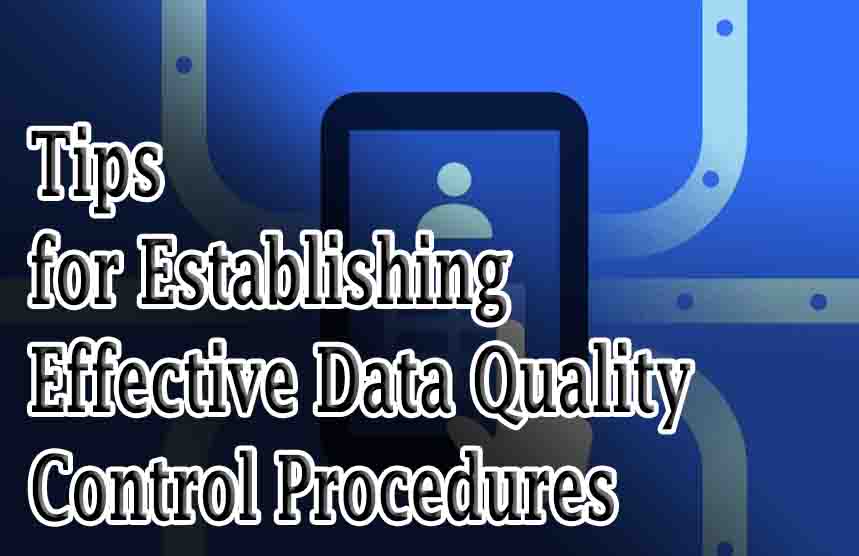Keeping the quality of your company’s data in the best shape possible is essential to ensuring your business runs smoothly. To ensure data quality, it’s crucial to have a plan in place that outlines how data should be collected and managed. The experts at Databand’s proactive data observability platform share their top tips for setting up effective data quality control procedures:
Table of Contents
Establish a Clear Data Governance Plan
Data governance sets and enforces data quality standards to ensure accuracy and completeness. Governance documents data policies, procedures, and standards across the organization. By having a clear path to data governance, you can ensure consistent data quality across all departments and processes. It also helps to develop a framework that defines quality metrics, such as accuracy and consistency.
Companies must create a plan that outlines roles, responsibilities, and accountability regarding how data is collected, stored, and accessed. Start by creating an inventory of all your systems, databases, and data sources to understand better what needs to be monitored. From there, you can start establishing data collection and storage guidelines and policies for handling exceptions.
Automate Data Quality Checks
As data volumes and complexity increase, manual processes for managing data quality become increasingly complex and time-consuming. Automated data quality checks can help companies save time by quickly identifying errors in the data before they become a problem. Automation also makes it easier to track data issues over time so that you can get an accurate picture of the health of your data.
When automating data quality checks, there are a few key areas to focus on, including accuracy, completeness, format, and consistency. Companies must also decide when and how often to run quality checks. Regular checks ensure that data is monitored regularly, while on-demand reviews are beneficial for catching potential issues as they arise.
Monitor Data Quality Over Time
Data quality control isn’t a one-time process—it’s an ongoing effort that requires regular monitoring and maintenance. To keep track of data quality, it’s vital to have an effective system that monitors and tracks changes over time. It means monitoring data sources for errors and inconsistencies and looking for any anomalies that could indicate malicious activity.
Companies should also look at how their data is used across different departments to ensure the same standards are applied. By regularly reviewing data quality, companies can quickly identify and address potential issues before they cause serious damage.
Educate Your Team
Data quality is a shared responsibility across all departments. Therefore, ensuring that everyone on your team knows the data quality standards and procedures is critical.
Start by designing an education program for employees to help them understand how data should be collected and managed correctly. Developing best practices for working with data can also help foster a culture of data-driven decision-making. Finally, ensure that everyone on your team is familiar with the data governance plan and regularly reviews any changes to policies or procedures.
Utilize Proactive Data Observability
The key to successful data quality control is proactive monitoring. A good data observability platform can help companies stay on top of their data by providing real-time insights into the health and performance of their systems, databases, and applications. Using these tools to surface any potential issues in your data before they become serious, you can quickly take corrective action and ensure that your data remains accurate and reliable.
Data observability platforms also offer the ability to track changes to data over time so that you can identify any patterns or anomalies that could indicate an issue. Ultimately, this helps organizations stay on top of their data quality to make more informed decisions.
Utilize Data Quality Tools
Data quality tools can help companies quickly and efficiently identify and address any issues with their data. These tools provide a range of features, such as data profiling, cleansing, standardization, and validation, to ensure accurate and reliable data is being used.
Using data quality tools also helps companies save time by automating manual processes and making it easier to monitor data quality over time. Companies should look for tools that provide advanced features, such as detecting duplicates and errors in real-time or alerting teams of potential issues.
Final Thoughts
Using a solution like Databand’s proactive data observability platform, you can quickly and easily monitor the health of your data. It allows companies to stay on top of potential issues before they become serious problems. Additionally, tools such as data quality checkers and education programs can help ensure that everyone knows the importance of preserving data accuracy and reliability. Together, these tactics will help you maintain a high-quality dataset and ensure that your data remains reliable.

